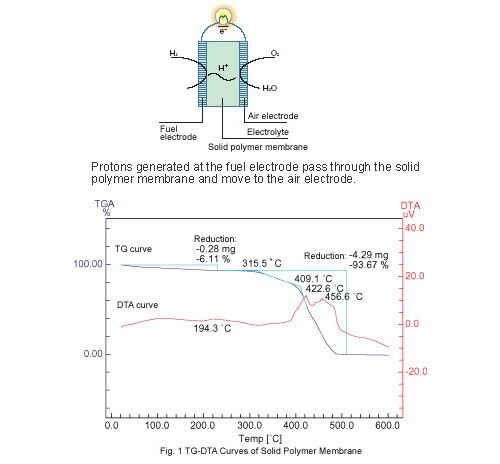Fuel Cells | Evaluation of Heat-Resistance of Solid Polymer Membranes (DTG)
Solid polymer membrane fuel cells are used for various domestic, automotive, and mobile applications, due to their low operating temperature and high-generation capacity per unit volume. The smallest unit in a solid polymer membrane fuel cell is the cell, which comprises a fuel electrode (cathode), solid polymer membrane, and air electrode (anode). A large number of these cells form a stack.
The heat resistance of a solid polymer membrane was measured with a DTG-60 Thermal Analyzer.
The solid polymer membrane was heated to 600 °C. The decomposition mechanism is believed to occur in three stages: dewatering to 250 °C, dissociation of the sulfonic group from around 316 °C, and decomposition of the main chains from around 409 °C.

TG-DTA Simultaneous Thermogravimeter/Differential Thermal Analyzer

The TG-DTA Simultaneous Thermogravimeter/Differential Thermal Analyzer features enhanced basic performance and can be applied to a diverse range of atmosphere gases. The TA-60WS Thermal Analysis Workstation compiles and analyzes data to make measurement simple.


